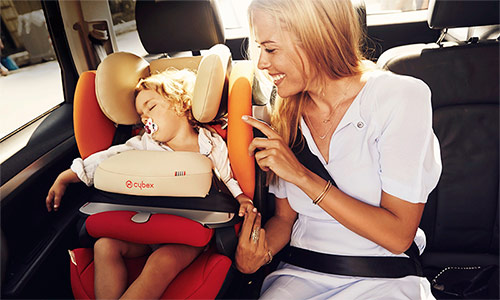When transporting a child in a car, his safety plays a big role. For this purpose, special chairs have been developed, which are rigidly fixed to the internal frequent cars and allow you to comfortably seat the baby on the designated protected place. The product has many varieties of weight of a small passenger, methods of fixing the device and the available adjustments. Choosing a car seat should take into account the parameters of the car, as well as attachment points. The information below will help to understand all the features of this product and get the most suitable option.
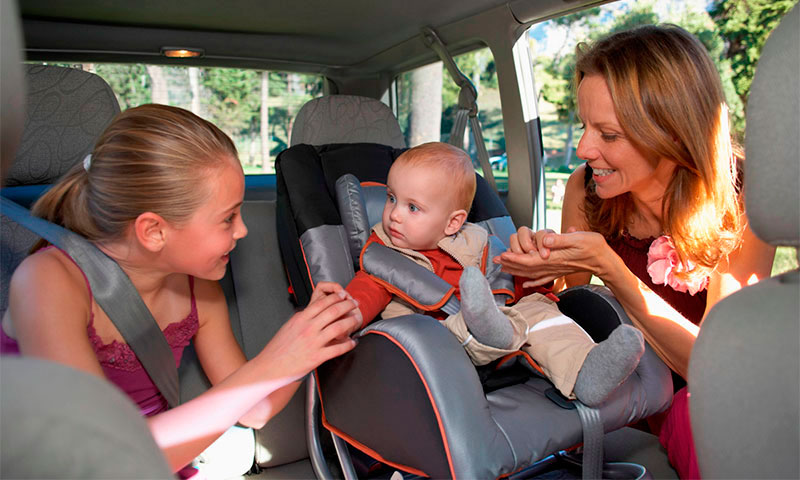
Content:
The best car seat manufacturers - which company to choose
For the release of such important products, you must have a special license, and all goods must undergo crash tests and be marked.
If the buyer absolutely does not have time to study the features of such products and you need to quickly purchase a car seat, then you can opt for one of the models of well-known manufacturers.
The best companies that have proven themselves in this business are:
- Britax Romer;
- Cybex;
- Baby Care.
Of course, knowing only the manufacturer’s company is not enough in this case, and it will be necessary to delve into the differences in weight and age of the product for the baby. For this it is worth reading ranking of the best children's car seatswhere age and weight categories are specified in detail, as well as advantages and disadvantages of such products are described.
The device and the principle of the car seat

Despite the standard soft car seats the child is hard to hold tight in it. Small stature and limbs do not allow to fully rest on accessible parts of the cabin (floor, handles, back of the front seat), and standard seat belts are stretched too high and do not fulfill their function.
To ensure a comfortable position of the baby and to protect it from bumps or falls during the jolts of the car and designed car seats.
They consist of a rigid frame that retains a certain position and shape. It is made of hard plastic or wooden elements. Some models may have a separate base and snap-on seat.
The seat differs in lateral sides with soft overlays and an additional deep head restraint. This mitigates the effects of side impacts on the hull or jerks with a sharp turn of the steering wheel.
For keeping the child under frontal loads, there is a special set of belts that fixes the baby from the chest at five points:
- each shoulder;
- belt from right to left side;
- crotch.
Such a system has its own tension control and does not allow a child to fly out in a collision of machines. In this case, the buckle, which binds the complex of belts together, must be quite difficult for the baby, so that he could not unbuckle it independently. Often this is achieved by laying a certain resistance under the button, which only an adult can easily overcome.
The seat itself is fixed in the cabin in different ways. For some models the waist of the backrest and the base is provided with a standard passenger belt. Others have a removable part on the latches, where only the platform is tightened with a belt, and the chair sits on top of its own clips.
The third type is the Isofix patent technology, which implies the presence in the car of the provided brackets and reciprocal hooks in the chair device.Putting the product into place is done by hitting the hooks in the loops, which is accompanied by a characteristic click. Additionally, an emphasis is placed on the floor or roof for more rigid fixation.
Types of car seats
Despite the common purpose, car seats have significant differences in age and weight of the passenger being transported. If you choose the wrong product, it may not only be useless in terms of safety, but also put the baby at greater risk during transportation. Here are the main types of such products.
Car seats 0+

They are small "cradles" with a slight bend in the middle. Designed for infants and can be operated from birth and until the baby reaches a weight of 13 kg.
The fixation system has three points and is equipped with straps with a very large layer of soft lining, so as not to damage the delicate skin of the child in open areas. The large headrest completely covers the back of the head and holds it securely. This is a very important element in view of weak cervical vertebrae in infants and a large head weight.
The design features of this group of seats are distinguished by the presence of a portable handle that allows you to get the child out of the car and back without taking it out of the seat.
The base has curved slats and when placed on the floor it is possible to rock the baby like in a rocking chair. It can be separately installed on the chassis and walk on foot. Often, such models are equipped with a hood.
Advantages:
- differ in easy weight;
- often equipped with an Isofix mount;
- have a nice look;
- you can swing a child or walk while riding on wheels;
- dense headrest for babies;
- very soft inner straps.
Disadvantages:
- Most cases are synthetic, which irritates the open parts of the body of the baby.
Car Seats 1
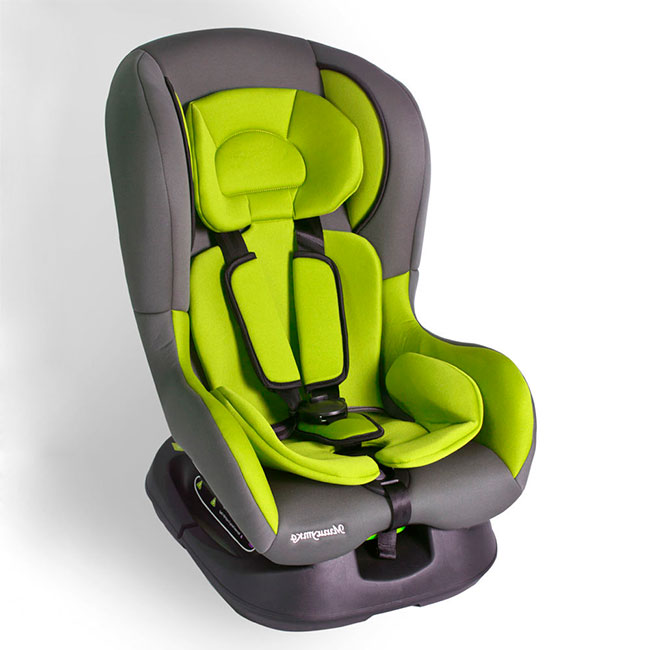
This group is designed for children from 9 to 18 kg. Often this coincides with the age from 9 months to four years. If in the first months of life there is no urgent need to travel with a child, then this option can be purchased immediately for long-term use.
Such models already differ by five points of fixation of the internal belts, since the small passenger is already more mobile and able to get out of the chair. The head restraint is shaped much freer than the previous group because the child can already hold the head on its own and wants to look around.
Additionally, these chairs are equipped with adjustable seat angle, because on the road, the baby can either sleep or awake, which is more convenient to do in different body positions. As the child grows, the height of the head restraint may become unsuitable, for which manufacturers have made this part mobile with the ability to lift it as the passenger grows.
Advantages:
- long operation of the device (up to 4 years);
- tilt angle adjustment;
- change the height of the headrest;
- five-point fixation;
- removable covers;
- construction weight about 6 kg.
Disadvantages:
- not all models have Isofix;
- some products have a low crash test score;
- high price.
Car Seats 2/3
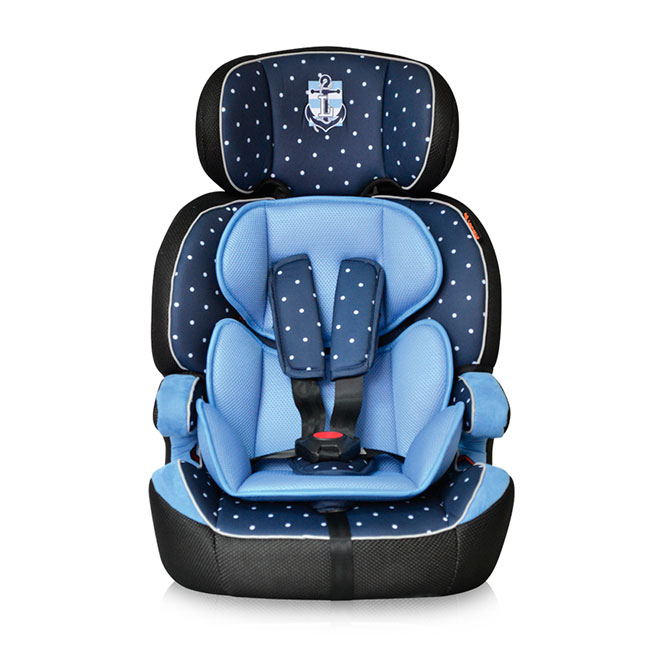
Such products are designed for children from four to 11 years. This compares with a mass of 15 to 36 kg. Since individuality plays a big role here, in many cases the product will be used for more than seven years.
The form of such devices are in the form of supports, to give the correct position to the body of the child, who relies already on the standard back of the car seat, or in the form of full-fledged chairs with armrests.
Advantages:
- have Isofix anchorages;
- head restraints are regulated;
- some models have coasters;
- comfortable anatomical pillows;
- width adjustment;
- beautiful view;
- give the correct position.
Disadvantages:
- no recumbency;
- models with backs are expensive;
- heavy to carry.
Additional differences

In addition to popular categories of seats, there are contiguous and less popular types of 0 + / 1 or 1 and 2 together, as well as 3, which allow intermediate values in age and weight. This allows you to either increase the time of use of a product or start using it earlier than models from the main group.
Yet all the seats differ in the position of the passenger during the trip: face in the direction of travel and vice versa. For very young children (up to a year) it is best to have products with a blue designation, which means fixing against the move.
When placed in the front seat, the airbag must be deactivated so that it does not damage the seat when triggered.
Options for choosing a car seat
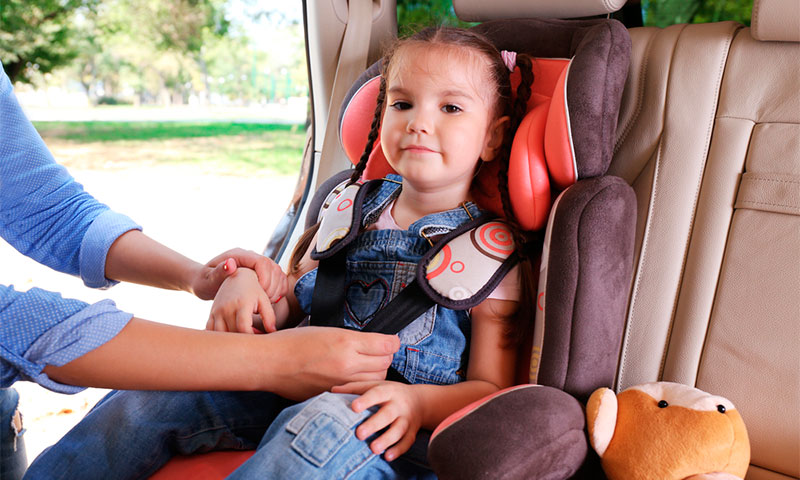
To find a practical and reliable car seat you need to take into account many factors. Design and color will play only a minor role. The main criteria are described below.
Select by group
First of all, the child’s age and its features, such as weight and height, will influence the choice of car seat. Ideally, you need to take the child with you to the store and try on the product on it. He should not be cramped or short in it.
It is good to purchase a structure with a clear margin in size, otherwise it will lead to the need to replace the chair with a larger one in the near future.
If you have to buy goods on the Internet, then without fitting you can rely on the classification into groups.
Category 0+ will suit most babies from birth to a year or a little more. This is comparable to mass, where the design limit is designed for a 13 kg user.
When a baby reaches 9 kg and the constant need to take it on a trip, it is worth purchasing a product of category 1. Such products will last up to four years or 18 kg.
The last group is the designation 2/3, which is suitable for children from 15 to 36 kg. In this case, the product will be used until the child grows to 11-12 years.
It is worth being careful with universal car seat models having combined intermediate indicators 1 and 2 or 1, 2 and 3. They may be too big for one-year-old children, which will lead to a passenger chattering on the trip. In another case, lateral protection will crowd older users aged 8-10 years.
By type of attachment
Since all the car seats are installed in the car, it is necessary to pay attention to the compatibility of the dimensions and type of attachment to a specific car brand.
A better type of fixation is considered the Isofix system, which supplies the lower part of the chair with grips with special grooves. The machine should be reciprocating brackets under the standard seats, which are attached directly to the body. By inserting these elements, the child seat is fixed rigidly, quickly and correctly.
Those who want to protect all passengers on the trip, choosing a product should pay attention to the presence of Isofix in the design of the chair. If it is indicated in the specifications, then in the product passport there will be a complete list of the brands of cars to which the product will fit.
Further information can be obtained from the dealership dealer. In the case of incompatibility of fixing units with the design features of the vehicle, the seat will have to be fixed with standard safety belts, and there is no sense to overpay for an unused advantage.
Car seat safety
The main task of the car seat is to protect the small passenger in an emergency. To do this, a variety of crash tests are carried out with imitation of frontal and side impacts and an assessment of the survival rate of each person in the cabin.
Evaluation of the results has a scale from 1 to 5 and is indicated in the product passport. For high security, you need to buy models that have won 4 or 5 stars.
The protection of a child in a car seat is influenced by many factors, one of which is the material and shape of the frame of the head restraint and side plates.
Since the design features are hidden from the buyer's eyes, it is necessary to make sure that there are markings on the product ECE R44.03.What will mean the suitability of products for withstanding side impacts, passing all the tests and the compliance of the seat belt buckles to the proper level of force when opening.
By adjustment possibilities
The presence of these options is associated with the correct location of the child and the provision of comfort on long trips.
Children grow up quickly and their position in the seat will change. Still, even during short trips, they often fall asleep, for which it is necessary to ensure a lying position. In moments of wakefulness, on the contrary, they don’t like to lie and want to look out the window.
For maximum convenience and correct fixation, you should look for models with the following functions:
1. Adjustment of internal belts. Allows you to set the height of the location of the line of the fixing elements so that they do not pass through the neck or below the shoulder - this will allow the belts to work properly in a collision and will not harm the child.
2. Headrest adjustment. Too high position makes the seat in the chair uncomfortable, and a low landing does not provide protection when embedding another vehicle.
3. Backrest tilt adjustment. This will allow you to relax more vertically and sit more evenly during waking hours.
Here you should pay attention to the design of the belt buckles. It must be quite complicated so that the baby cannot unfasten it independently, but at the same time is easy for parents to use.
If the car seat is bought for a single long trip, you can purchase a simple design without all types of adjustment that matches the current parameters of the child. But if the need to use a car fixture will be long, then these options will come in handy.
By way of installation
Car seats for children can be mounted on the front passenger or rear seat, but there is a difference in the way of setting: the front part in the direction of travel or against it.
For babies, it’s safer to stand against the car. During any impact (from the side or from behind) before the child’s torso, there will be no free space for flying if the belts are unfastened (which the kids can do unconsciously by developing the motility of the fingers).
For the category from birth to one year it is better to buy a car seat with a position against the course of the movement. For older children, fix the chair facing the front of the front.
On the practicality of care
Toddlers often crumble cookies and scatter other foods on the road. Most of the "impact" will take on the soft upholstery car seats. For half a year, the type of product can deteriorate badly. Therefore it is necessary to look for goods with removable covers.
Buying a car seat with removable covers will allow you to wash the cloth and keep the conditions clean for the child. But in the case of short-term use of the chair there is no such need, therefore, detachable covers are useful only for those who often ride with the baby.
Additional selection criteria
Some category 0+ seats are equipped with additional chassis, which allows you to get the seat out of the car, install it on your own base and easily move along the street or the institution without having to carry the baby in your hands. This is convenient and fast, because there is no need to shift the child, but you can immediately take it along with the car seat.
But it is in demand for frequent trips to places where walking is required (there is no way to drive up close to the car, the active life of the mother, who may have to do additional things with the child). If there is already a small stroller placed in the trunk or from the house to the car no more than a minute, then separate chassis for the car seat will not be needed.
Which child car seat is best to choose
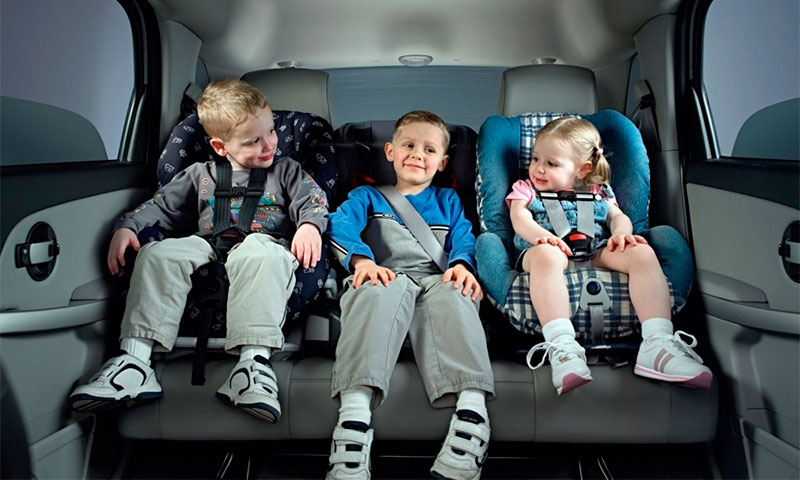
To make it easier to navigate a wide variety of models, it is worth simplifying the choice of car seat by dividing into key parameters:
1. For infants and up to 14 months, it is worth taking a group of 0+ with a five-point crash test safety rating and anchorage against the course of the movement.Who plans to walk a lot with the child will benefit from a chassis with a frame, connected to the bottom of the car seat and sun visor.
2. For about one-year-old children and up to 4 years old, a product from the 1st group with a permeability test rate of at least 4 stars, an Isofix mount, and removable covers will suit. Be sure to adjust the height of the headrest, the angle of the backrest and points of exit belts.
3. Older children, from 4 to 7 years old, will be optimal design group 2/3 with the fastening of regular belts, removable covers and adjustable headrest and backrest. Fixing the position in the car in the direction of travel. Coasters for frequent trips do not interfere.
4. Children 8-12 years old, who behave quite consciously, will be approached by the 3rd category of goods in the form of a backless seat. This will allow the passenger to properly position and stretch the regular belt in the right place. Here is the most simple and inexpensive design.
How much is a car seat
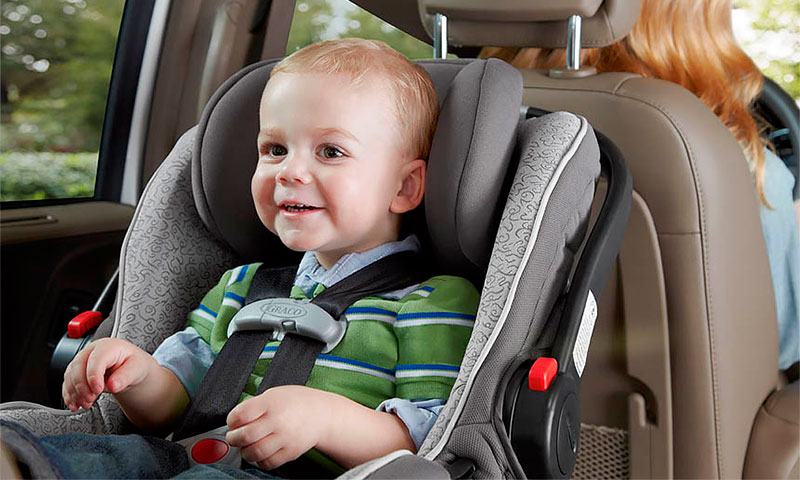
You can buy a car seat for various parameters of the child in the following price range:
1. For infants and up to 14 months (up to 13 kg) the goods will cost from 2,000 to 6,000 rubles. The higher the cost, the more appreciated they are for crash tests and endowed with additional devices (visor, handle, pad on the legs).
2. For children under 4 years old (9-18 kg) car seat will cost 3000-12000 rubles. Here, the price also affects the configuration, the availability of Isofix and the available adjustments.
3. For small passengers from 4 to 7 years (15-36 kg) full-fledged seats will have a price of 6000-12000 rubles. The cost depends on the material of the upholstery, the ability to adjust the slope and mounting system.
4. Supports for children 9-12 years old have rates from 1000 to 3000 rubles, which is associated with the fabric and the height of the protruding armrests for convenience.
It will be interesting to friends too

